The Annual Election Period (AEP), also known as Medicare Open Enrollment, ends December 7. Please return all applications ASAP. Every year we have the last-minute procrastinators contacting us at the eleventh hour on December 7th. Please do not be one of them.
Part D Prescription plans (PDPs)
Many of you contact us every fall to have us review your PDPs. This is a smart idea and a benefit for you because it helps you to enjoy having the lowest cost plan year after year.
One trend that we have seen through the years is this. Company X comes out with a very competitive PDP either with a low premium and/or low copays. As time goes by, their premium creeps upward. A few years ago, Company X was $15 per month in most states. Now it’s around $38 per month.
Company Y has had a very competitive PDP for about four years running. However, they increased their premium 25-30%, depending on which state you are in.
At the same time Company Z decides are come out with their new plan, undercutting the competition. Their premium is $15-16 in most states. We have already signed up dozens of you for this plan. This is saving people anywhere from $125 to $250 per year compared to staying with their current plan.
However, you still need to be mindful of the pattern. Company Z will almost assuredly suffer from premium creep in a few years. Most of the original plans from 2006 are gone. Many of the original Part D companies have pulled out, or most of the plans have been reinvented. However, Company A has a plan that was $13 per month in 2006. It’s now around $75 per month. That’s premium creep!
Here’s another trick some companies do. Most generics, but not all, are classified as tier one or tier two generics. This will be true of common prescriptions such as lisinopril, metformin, levothyroxine, simvastatin, omeprazole, and hundreds of others. So far so good.
Seroquel is a psychotropic drug used to treat depression or bi-polar. The generic is quetiapine fumarate. Through 2018 Company B lists quetiapine as a tier 3 drug. The cost is $9 in 2018. When I did a Medicare.gov drug search for one client, I discovered that the cost of quetiapine with Company B is rising to $39 per month in 2019. Tier 3, 4 and 5 drugs are subject to the $415 deductible. After that, tier 3 drugs have a $45 copay.
Isn’t that convenient of them! The $39 is still below the $45 copay for a tier 3 drug. Even if my client meets his deductible, he still pays $39 for quetiapine. The bottom line is that he got stuck with a $30 per month increase. Thirty dollars is $30, whether it be additional premium or a higher copay. He gets no help for this drug! Fortunately, we found another plan the has quetiapine as a tier 2 drug with a much lower copay. He elected to change plans. The above are examples of why we encourage you to shop your PDP every year.
Do you really like batting you head against the wall? Call your agent first!
Case #1
Note: I have changed the names of the actors and location for confidentiality.
Marvin and Betty Jones live in Snow City, Montana. Marvin is diabetic, and his doctor wanted him to get a blood glucose monitor. Betty initiated an inquiry to find out how it’s covered.
She first went to their pharmacist at Help You Get Well Pharmacy in Snow City. The pharmacist told Betty that her husband’s PDP covers the blood glucose monitor. Ouch! Upon hearing that, she called customer service at Marvin’s Part D company. Bad mistake! She was on hold for who knows how long and was passed from rep to another rep until the call finally dropped off. Par for the course!
Exasperated, she called Medicare. Now she’s on hold for who know how long, and when she finally spoke to a live person, said person had not a clue. You would think they would know better! Now she’s spent hours getting nowhere except for getting more frustrated.
In desperation she called me. Upon hearing her situation, I said, “Let’s check Medicare.gov and especially “What Medicare Covers.” I have a link for this on our website. Please click here. Look for the fourth bulleted item down.
In less than two minutes I had her answer. Quoting from Medicare.gov.
Blood sugar (glucose) monitors
…Medicare Part B covers blood sugar monitors as durable medical equipment (DME) that your doctor prescribes for use in your home.
Notice that it says Medicare Part B. Part B is medical, which means that Medicare will generally pay 80% of the cost of the blood glucose monitor and Marvin’s Medsupp plan will pay the other 20%.
Part D prescription plans pay for outpatient drugs. They do NOT pay for equipment or supplies such as diabetic test strips, meters, needles, catheters, blood glucose monitors, etc.
We’ll let the entry level employees at Marvin’s Part D company or Medicare off the hook. What about the pharmacist at Help You Get Well? A pharmacy degree requires something like six years of college. Furthermore, the pharmacist knows, or should know, that diabetic equipment is never billed to a prescription plan. You would hope that he’d also knew that a blood glucose monitor is also equipment and not a drug! His wrong answer sent Betty on a wild goose chase.
Now, if you enjoy being on hold, getting wrong answers, and getting you call dropped off, you’re welcome to do so. It’s your time.
If you want to save much grief, call your agent first!
Case #2
Joe and Betty Arlington live in Twin River, Idaho. (Again, all names are fictitious.) Joe was on his wife’s employer plan, which included prescriptions, for about five years, and last fall he went off her plan and signed up for a Part D prescription plan. We shopped for a new PDP for Joe this fall, and during the course of the conversation, Betty told me that she was paying about $25 per month extra for Joe’s Part D premium.
She called Joe’s PDP company, Company D, early in 2018. She asked the customer service rep why she was being billed a higher premium for Joe. The poor rep had not a clue. I might add that we should not expect these reps to know these answers. Their job is to verify your enrollment and answer general questions about the PDPs their company represents. They are not trouble shooters.
When Betty explained the situation to me, it didn’t take me long to figure out what was happening. Medicare doesn’t know that Joe was covered by an employer prescription plan for five years. Therefore, they are billing him for the late Enrollment penalty (LEP). The math works out that the extra premium that he’s paying is the LEP.
If Betty had called me first, that would have saved her a frustrating call to Company D. To resolve this issue, we will have to reach a supervisor in a 1-800 Medicare to fix the situation. Also, if she had called me sooner, we may have been able to have stopped the overcharge early on in the year. I’m doubtful that she’ll be able to get a refund.
Moral of the story: If you want to save heartburn and acid indigestion, CALL US FIRST concerning anything connected with any of your Medicare supplement, Medicare advantage, or Part D Prescription plans. We’ll do everything possible to save you the grief of having to call a company or 1-800-Medicare.
Changing Your Medicare Supplement Plan
There are two misconceptions concerning changing your Medicare supplement plan. Please see our companion article in this issue.
Misconception #1—People think that they can automatically change their Medsupp plan during the AEP. They hear “Open enrollment” on TV and think that that applies to a Medicare supplement plan. For most people, once you pass 65 ½, changing a Medsupp plan involves medical underwriting. This means having “No” answers to questions regarding your current health. Misconception #2—People think that a Medsupp plan can ONLY be changed during the AEP. You can change your Medsupp plan ANY MONTH of the year, subject to medical underwriting. Example: Max Bolivar is having a cataract procedure in March. Once his procedure is complete, he can change to another Medsupp as long as he can answer “No” to the health questions on the new company’s application. End
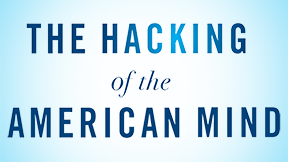
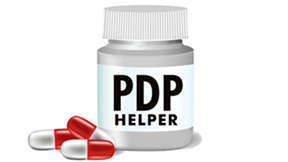 This AEP is our third year of using PDPHelper. The following are some tips to help us do accurate searches for you on Medicare.gov.
This AEP is our third year of using PDPHelper. The following are some tips to help us do accurate searches for you on Medicare.gov.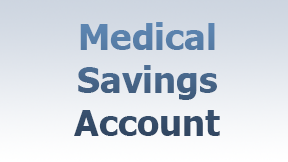 The Medical Savings Account (MSA) type of Medicare advantage plan has existed previously, but it will be new for many people. This plan is available in selected states including Montana, Utah, and Wyoming but not yet in Idaho, Oregon, or Washington. Before we delve into the mechanics of how the MSA plan works, let’s review the types of Medicare advantage (MA) plans.
The Medical Savings Account (MSA) type of Medicare advantage plan has existed previously, but it will be new for many people. This plan is available in selected states including Montana, Utah, and Wyoming but not yet in Idaho, Oregon, or Washington. Before we delve into the mechanics of how the MSA plan works, let’s review the types of Medicare advantage (MA) plans.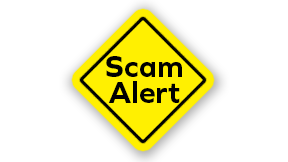 By Marc Lichtenfeld, Chief Income Strategist, The Oxford Club
By Marc Lichtenfeld, Chief Income Strategist, The Oxford Club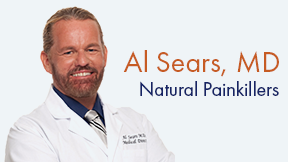 By Dr. Al Sears
By Dr. Al Sears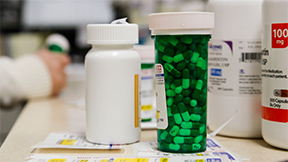 Why Your Pharmacist Can’t Tell You That a $20 Prescription Could Cost Only $8
Why Your Pharmacist Can’t Tell You That a $20 Prescription Could Cost Only $8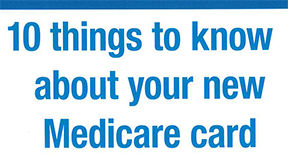 10 Things to Know About Your New Medicare Card
10 Things to Know About Your New Medicare Card